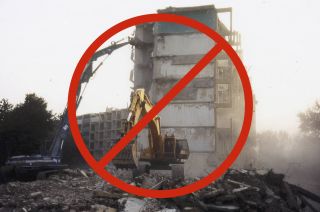
www.buildingsandcities.org/insights/commentaries/women-colour-urban-planning.html
Where are Women of Colour in Urban Planning?

Why urban planning needs to become more diverse and inclusive.
Safaa Charafi asks: is it possible to decolonialise the planning profession to create more inclusive and egalitarian urban settings? It is widely accepted that cities are built by men for other men. This male domination in urban planning results in cities that often do not adequately address challenges encountered by women or ethnic and social minorities. Although efforts are being taken to include women in urban planning, women of colour are still under-represented in many countries, resulting in cities that often overlook their needs.
The current landscape
Multiple studies show that incorporating people from different cultural backgrounds can help to generate novel approaches for solving tough urban problems (Gilroy 2010). Despite a gradual increase of female architects recently, their influence continues to be overshadowed by their male counterparts. In "Where are the Women Architects?" (Stratigakos 2016) readers were prompted to consider why women's contributions within architecture are absent from mainstream narratives. Yet, excluding other groups from urban planning processes is even less researched. As an architect and urbanist woman of colour (WoC), the question I pose is 'Where are women of colour in urban planning?'. If women face challenges undermining their visibility and recognition within the profession, then women of colour and minority urbanists face a compound of intersectional challenges making them almost invisible from the field.
Systemic issues such as discrimination, racial biases, barriers to accessing architectural and urban planning education, limited technical training opportunities, and the burden of historical oppression exacerbate the challenges faced by WoC in urban planning. This underrepresentation, and the need to include their experiences, obstacles, and achievements in decision-making are documented in critical discussions within the field. Cultural and historical conditions perpetuate an environment where the talents and contributions of WoC are often overlooked or undervalued. For instance, awareness of the benefits and challenges of urban planning remains especially low among young people (Palazzo et al. 2021), and people from non-white ethnicities are significantly underrepresented in the profession. In 2021 in the US (according to data from the Census Bureau), nearly 79% of urban planners were white, of which 43% were women and 57% men, and only 5% were Black or African American. (NB: 12% of the US population identify as Black or African American.) Addressing these disparities is not only a matter of equity, it is vital for a field that wants to truly reflect the diversity of the communities it serves (Beebeejaun 2017).
Challenges faced by women of colour
The field's capacity for innovative problem-solving to address inequality has been hampered by structural barriers that restrict access to education and employment for women (Harloe 2001; Hayden 1980). Understanding the effects of women's historical underrepresentation in urban planning is crucial for overcoming the obstacles women still face, even more so for those with histories of exclusion and/or marginalisation.
For example, planning's role in hindering African Americans' voting rights through discriminatory real estate practices and unequal green space allocations is a prime example of the field's role in perpetuating discriminatory societal practices (Goetz et al. 2020). Other racist practices in American urban planning are redlining, which denies financial services based on race, favouring white folks; racial steering which means guiding prospective homebuyers to certain neighbourhoods based on race; urban renewal which often displaces minority communities for development projects and exacerbate inequalities, and zoning laws that segregated communities, limiting resources for marginalised groups. As such, obstacles faced by WoC in urban planning go beyond the workplace: they are ingrained in societal structures rooted in the US colonial past.
Therefore a pressing need exists to encourage diversity in the profession in light of the dearth of Black, Asian and Minority Ethnic (BAME) planners on decision-making teams. More measures are needed to increase representation of non-white women, such as affirmative actions, targeted recruitment efforts, mentorship programs, and diversity training for hiring committees, creating safe and inclusive work environments, providing equitable access to education and training opportunities, and actively challenging biases and systemic barriers within the profession.
Furthermore, the most successful inclusive environments are those which actively promote diversity by moving from a mere acceptance of differences - or worse: tokenism - to a genuine celebration of them, thus it is not simply enough to increase the number of WoC in the profession. A more radical approach is required: understanding and changing social institutions and power dynamics is a must if society is to transcend individual interactions and instigate systemic change.
Breaking the mould in urban planning
The evaluation of planners' roles in a racially unequal society in the UK dates back to the 1980s. Scholars in the 1990s and early 2000s critically examined structural planning discrepancies disproportionately affecting BAME communities (Fainstein 2014). This scrutiny led to suggestions for reducing these inequalities, with planning experts advocating for anti-racism in the Town and Country Planning Journal. In 1998, a publication highlighted the failure of Britain's state planning system to meet the needs of BAME populations, sometimes even overlooking them. The 1993 Royal Town Planning Institute paper, 'Ethnic minorities and the Planning System', supports this claim asserting that a 'colour-blind approach to planning policy and practice' institutionalises indirect prejudice in planning. Many urban planners of colour are pointing out ways to reimagine inclusive urban spaces by dismantling the legacy of racist planning, housing and infrastructure policies (Agyeman 2020). This historical context reinforces the imperative of ongoing efforts to address racial inequalities in urban planning. We must avoid assuming that BAME communities lack agency or influence.
There's a need for both BAME representation in planning and a deeper understanding of racial inequalities. If the aim is to decolonise the field of urban planning, then society must comprehend the enduring impact that colonial legacies have had on it. As Beebeejaun et al. (2020) stated: ignoring planning's colonial history and its role in perpetuating racial inequality hinders meaningful engagement with the BAME community and limits our ability to enact substantial change.
Conclusions
Addressing inherent inequalities in the urban planning sector is critical for rectifying past and present injustices and dismantling exclusionary practices that marginalise underprivileged populations. Failure to address the profession's lack of diversity and inclusion risks losing both talent and the ability to create radically inclusive and diverse cities.
While progress has been made in advancing gender equality and involving women in planning processes, there remains a glaring gap in recognising and uplifting WoC in urban planning. To truly decolonise the field, it is now time to adopt a radical approach that centers the voices and experiences of marginalised communities as well as challenging the dominant narratives that perpetuate their exclusion and marginalisation
Incumbent urban planning processes often carry hidden biases and discriminatory practices. These inappropriate practices can manifest in biased hiring practices and a lack of diverse leadership, as well as creating barriers that stifle representation and participation. The only way to break these barriers is to confront our own subconscious prejudices, challenge institutional roadblocks, and embrace approaches that empower WoC to contribute meaningfully to urban planning. It's not just about policy; it's about people, their voices, and their right to shape the places they call home.
Creating urban planning that is not a built rendition of social biases is a challenge. It necessitates freeing our imagination. However, acknowledging and unlearning these biases are the first steps towards liberation, decolonising the field and amplifying the voices of those historically excluded. After all, urbanism needs to look like the world it serves - and that's everybody.
References
Agyeman, J. (2020, June 27). Urban planning as a tool of white supremacy - the other lesson from Minneapolis. https://theconversation.com/urban-planning-as-a-tool-of-white-supremacy-the-other-lesson-from-minneapolis-142249
Beebeejaun, Y. (2017). Gender, urban space, and the right to everyday life. Journal of Urban Affairs, 39(3), 323-334.
Beebeejaun, Y; Chapman, K. (2020) Decolonising British planning. In: Chapman, K., Inch, A. & Tait, M. (eds.) The Right Answers to the Right Questions? (pp. 30-34). Town & Country Planning Association: London, UK.
Fainstein, S.S. (2014). The just city. International Journal of Urban Sciences, 18(1), 1-18. https://doi.org/10.1080/12265934.2013.834643
Gilroy, R. (2010). Planning and diversity in the city: redistribution, recognition and encounter. Planning Theory & Practice, 11(1), 132-133. https://doi.org/10.1080/14649351003622433
Goetz, E.G., Williams, R A., & Damiano, A. (2020). Whiteness and urban planning. Journal of the American Planning Association, 86(2), 142-156. https://doi.org/10.1080/01944363.2019.1693907
Harloe, M. (2001). Social justice and the city: the new 'liberal formulation'. International Journal of Urban and Regional Research, 25(4), 889-897.
Hayden, D. (1980). What would a non-sexist city be like? Speculations on housing, urban design, and human work. Signs: Journal of Women in Culture and Society, 5(S3), S170-S187.
Palazzo, D., Hollstein, L., & Diko, S.K. (2021). Urban planning as a career preference for students: efforts to improve awareness about the profession. Planning Practice & Research, 36(2), 174-192. https://doi.org/10.1080/02697459.2020.1782056
Stratigakos, D. (2016). Where Are the Women Architects? Princeton University Press. https://doi.org/10.2307/j.ctvct00dx
Latest Peer-Reviewed Journal Content
Net zero retrofit of the building stock [editorial]
D Godoy-Shimizu & P Steadman
Co-learning in living labs: nurturing civic agency and resilience
A Belfield
The importance of multi-roles and code-switching in living labs
H Noller & A Tarik
Researchers’ shifting roles in living labs for knowledge co-production
C-C Dobre & G Faldi
Increasing civic resilience in urban living labs: city authorities’ roles
E Alatalo, M Laine & M Kyrönviita
Co-curation as civic practice in community engagement
Z Li, M Sunikka-Blank, R Purohit & F Samuel
Preserving buildings: emission reductions from circular economy strategies in Austria
N Alaux, V Kulmer, J Vogel & A Passer
Urban living labs: relationality between institutions and local circularity
P Palo, M Adelfio, J Lundin & E Brandão
Living labs: epistemic modelling, temporariness and land value
J Clossick, T Khonsari & U Steven
Co-creating interventions to prevent mosquito-borne disease transmission in hospitals
O Sloan Wood, E Lupenza, D M Agnello, J B Knudsen, M Msellem, K L Schiøler & F Saleh
Circularity at the neighbourhood scale: co-creative living lab lessons
J Honsa, A Versele, T Van de Kerckhove & C Piccardo
Positive energy districts and energy communities: how living labs create value
E Malakhatka, O Shafqat, A Sandoff & L Thuvander
Built environment governance and professionalism: the end of laissez-faire (again)
S Foxell
Co-creating justice in housing energy transitions through energy living labs
D Ricci, C Leiwakabessy, S van Wieringen, P de Koning & T Konstantinou
HVAC characterisation of existing Canadian buildings for decarbonisation retrofit identification
J Adebisi & J J McArthur
Simulation and the building performance gap [editorial]
M Donn
Developing criteria for effective building-sector commitments in nationally determined contributions
P Graham, K McFarlane & M Taheri
Reimagining circularity: actions for optimising the use of existing buildings
R Lundgren, R Kyrö, S Toivonen & L Tähtinen
Effective interdisciplinary stakeholder engagement in net zero building design
S Vakeva-Baird, F Tahmasebi, JJ Williams & D Mumovic
Metrics for building component disassembly potential: a practical framework
H Järvelä, A Lehto, T Pirilä & M Kuittinen
The unfitness of dwellings: why spatial and conceptual boundaries matter
E Nisonen, D Milián Bernal & S Pelsmakers
Environmental variables and air quality: implications for planning and public health
H Itzhak-Ben-Shalom, T Saroglou, V Multanen, A Vanunu, A Karnieli, D Katoshevski, N Davidovitch & I A Meir
Exploring diverse drivers behind hybrid heating solutions
S Kilpeläinen, S Pelsmakers, R Castaño-Rosa & M-S Miettinen
Urban rooms and the expanded ecology of urban living labs
E Akbil & C Butterworth
Living with extreme heat: perceptions and experiences
L King & C Demski
A systemic decision-making model for energy retrofits
C Schünemann, M Dshemuchadse & S Scherbaum
Modelling site-specific outdoor temperature for buildings in urban environments
K Cebrat, J Narożny, M Baborska-Narożny & M Smektała
Understanding shading through home-use experience, measurement and modelling
M Baborska-Narożny, K Bandurski, & M Grudzińska
Building performance simulation for sensemaking in architectural pedagogy
M Bohm
Beyond the building: governance challenges in social housing retrofit
H Charles
Heat stress in social housing districts: tree cover–built form interaction
C Lopez-Ordoñez, E Garcia-Nevado, H Coch & M Morganti
An observational analysis of shade-related pedestrian activity
M Levenson, D Pearlmutter & O Aleksandrowicz
Learning to sail a building: a people-first approach to retrofit
B Bordass, R Pender, K Steele & A Graham
Market transformations: gas conversion as a blueprint for net zero retrofit
A Gillich
Resistance against zero-emission neighbourhood infrastructuring: key lessons from Norway
T Berker & R Woods
Megatrends and weak signals shaping future real estate
S Toivonen
A strategic niche management framework to scale deep energy retrofits
T H King & M Jemtrud
Generative AI: reconfiguring supervision and doctoral research
P Boyd & D Harding
Exploring interactions between shading and view using visual difference prediction
S Wasilewski & M Andersen
How urban green infrastructure contributes to carbon neutrality [briefing note]
R Hautamäki, L Kulmala, M Ariluoma & L Järvi
Implementing and operating net zero buildings in South Africa
R Terblanche, C May & J Steward
Quantifying inter-dwelling air exchanges during fan pressurisation tests
D Glew, F Thomas, D Miles-Shenton & J Parker
Western Asian and Northern African residential building stocks: archetype analysis
S Akin, A Eghbali, C Nwagwu & E Hertwich
Join Our Community

The most important part of any journal is our people – readers, authors, reviewers, editorial board members and editors. You are cordially invited to join our community by joining our mailing list. We send out occasional emails about the journal – calls for papers, special issues, events and more.
We will not share your email with third parties. Read more



Latest Commentaries
Building-Related Research: New Context, New Challenges
Raymond J. Cole (University of British Columbia) reflects on the key challenges raised in the 34 commissioned essays for Buildings & Cities 5th anniversary. Not only are key research issues identified, but the consequences of changing contexts for conducting research and tailoring its influence on society are highlighted as key areas of action.
Lessons from Disaster Recovery: Build Better Before
Mary C. Comerio (University of California, Berkeley) explains why disaster recovery must begin well before a disaster occurs. The goal is to reduce the potential for damage beforehand by making housing delivery (e.g. capabilities and the physical, technical and institutional infrastructures) both more resilient and more capable of building back after disasters.